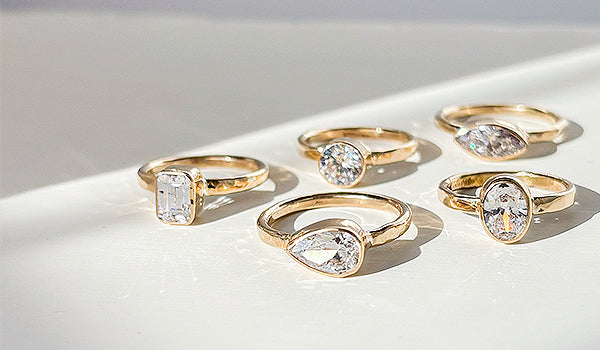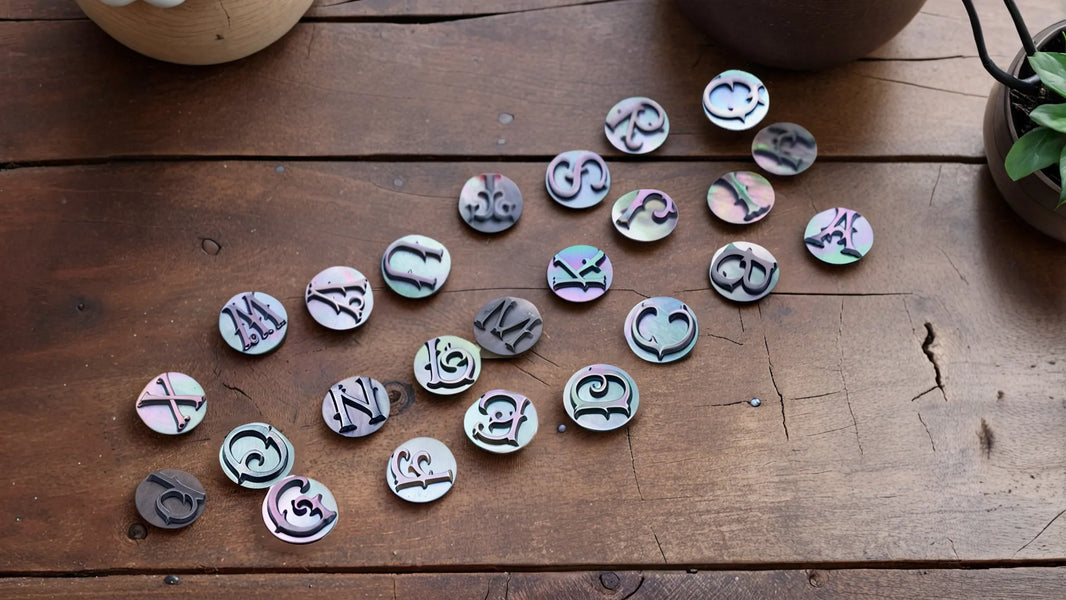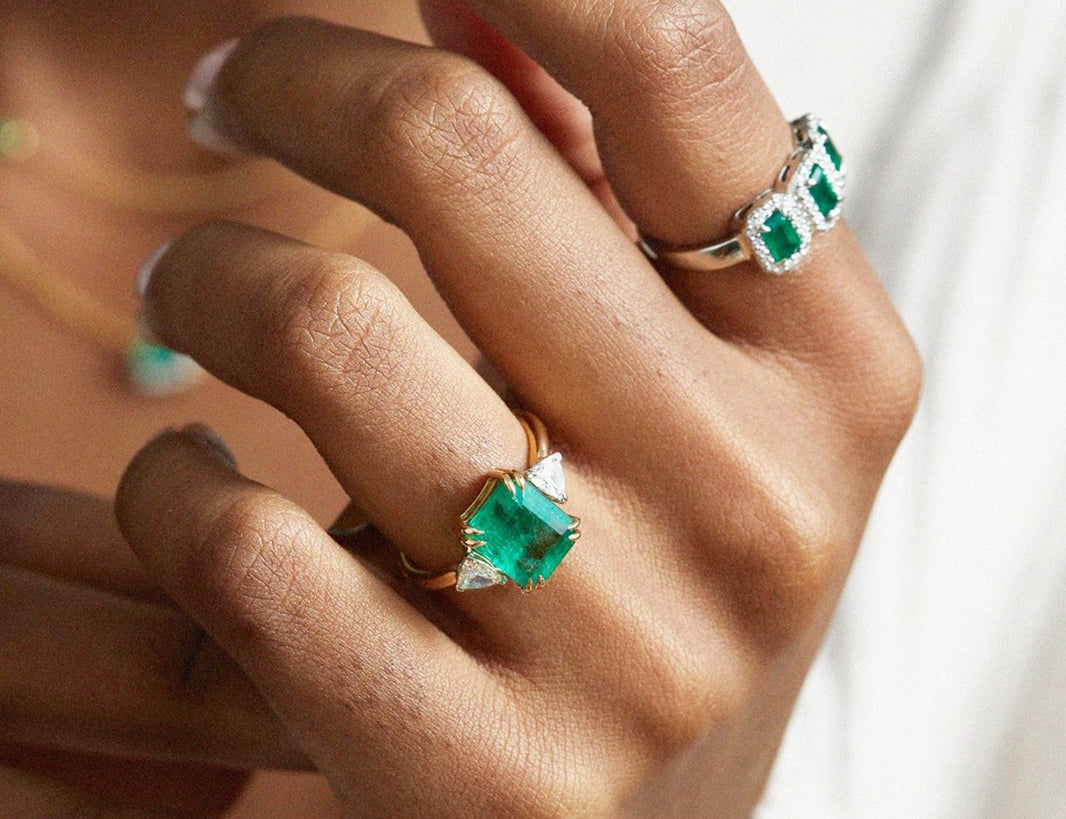A brilliant engagement ring should feel like a personal triumph, not a financial stretch. In recent years I’ve helped countless couples pair exceptional craftsmanship with level‑headed budgets, and the clearest pathway has been lab‑created diamonds. When executed thoughtfully, a “cheap” lab‑created engagement ring can be anything but compromising—more sparkle per dollar, more design freedom, and more confidence in what you’re buying. Consider this your connoisseur’s field guide to getting the look you love for less, with the rigor and transparency you deserve.
What “Lab Created” Really Means
Lab‑grown diamonds are real diamonds—crystalline carbon with the same optical, chemical, and physical properties as mined stones. They’re not simulants like cubic zirconia or moissanite. The Federal Trade Commission recognizes properly described lab‑grown diamonds as diamonds, and leading labs such as GIA and IGI grade them using familiar 4Cs frameworks. In practice, a well‑cut lab‑grown diamond is indistinguishable to the naked eye from a mined diamond of similar specs, a point underscored by education sources from GIA and quality‑focused retailers such as Brian Gavin Diamonds and Whiteflash.
Two growth methods dominate. HPHT (high pressure, high temperature) simulates the Earth’s mantle conditions. CVD (chemical vapor deposition) builds diamond layer by layer in a carbon‑rich plasma. Neither is inherently “better” for everyday wear. What matters most to your experience—how bright a diamond looks across real‑world lighting—remains the cut, not the origin or growth method. In hand and under a loupe at my bench, the lab‑grown diamonds that draw gasps have precise proportions and crisp facet symmetry, period.
HPHT vs CVD in Plain English
Both methods produce superb diamonds in capable hands, but they leave subtle footprints that matter to gemologists and, occasionally, to informed buyers choosing among options.
Method |
Everyday strengths |
Lab diagnostics (GIA) |
Buyer note |
CVD |
Often high clarity and consistent shapes; efficient growth supports availability. |
Silicon‑vacancy photoluminescence near ~737 nm; layered/sector fluorescence; occasional vacancy‑related brown hues; documented photochromism and thermochromism under UV/heat. |
Ask whether post‑growth annealing was used; let a CVD stone “rest” away from UV before color judgments to avoid temporary shifts. Source: GIA. |
HPHT |
Robust growth that can yield excellent color; can improve clarity during treatment. |
Metallic flux inclusions (Fe‑Ni‑Co), hourglass fluorescence patterns, nickel‑related spectral features; boron in type IIb blues. |
Expect clean daily wear; ensure any visible inclusions are stable and not surface‑reaching. Source: GIA. |
I emphasize this not to complicate your decision, but to reassure you: these scientific hallmarks are tools for identification and disclosure. For your everyday enjoyment, focus your budget on cut precision and a design that suits your lifestyle.

Why Lab‑Created Often Costs Less—and How Much Less
The modal experience is substantial savings. Several credible sources describe overlapping, yet different, ranges. Diamond Chemistry frames the gap around 20–40 percent. Brilliant Earth often cites 30–50 percent. Varniya notes 40–60 percent and illustrates a 1‑carat comparison around $6,000.00 for a mined diamond versus $2,500.00 for a comparable lab‑grown option. Whiteflash has published specific examples where a 1.00‑carat D VVS lab‑grown diamond is quoted near 1,295.00 while a natural diamond around 1.10 carats F VS1 sits closer to 7,700.00. You can see how absolute differences vary by precise specs.
If you notice disagreement across sources, you’re seeing market realities rather than contradiction. The stated gap shifts with timeframe (retail prices moved quickly from 2023 to 2025), sample selection (top‑tier cut quality and color can skew the comparison), and methodology (per‑carat ranges versus specific stones). When I plan a ring with a client, I use the percentage as a directional guide, then lock decisions to the diamond in front of us. The punchline is consistent: the same budget either buys a larger or higher‑quality stone in lab‑grown, or it buys the same visual presence for markedly less.
The Value Equation: Cut First, Then Everything Else
The smartest way to stretch your budget is to prioritize true light performance. Specialists such as Brian Gavin Diamonds and Whiteflash are adamant that cut dominates what your eye perceives, eclipsing marginal improvements in color or clarity once you’re within sensible ranges. I share that view from experience.
For most buyers, the sweet spot starts with an excellent or ideal cut grade and proven optical symmetry for rounds, or with carefully vetted proportions for fancy shapes. After cut, lean into near‑colorless color if your setting allows it. Yellow or rose gold can make an H–J range diamond feel warm and effortless; white metals flatter G–H without paying a premium for D–F. For clarity, “eye‑clean” SI1 or VS2 is often indistinguishable in daily wear from VVS grades at a fraction of the price. Fancy shapes add another lever: an oval or marquise typically offers more face‑up spread than a round at the same carat weight, and a halo setting, as Diamond Chemistry notes, visually magnifies the center by framing it with a bright corona.
If your budget is truly tight, consider strategic design choices rather than binary compromises. A slim band can make the center stone appear larger. A bezel setting adds sleek protection and everyday confidence. A cathedral profile adds drama without changing the center. These touches belong to great jewelry, not to a price category.

Certification, Transparency, and Laser Inscriptions
Independently graded diamonds are easier to compare and simpler to service over a lifetime. GIA and IGI both issue lab‑grown diamond reports that disclose the stone’s laboratory origin and, when determinable, the growth method and any treatments. GIA also offers distinct reporting paths that can be useful to value‑conscious buyers.
GIA service |
Scope |
What you receive |
When to choose |
Laboratory‑Grown Diamond Quality Assessment |
Colorless to near‑colorless loose diamonds, generally starting at 0.15 carats. |
An overall classification such as Premium or Standard; laser inscription “Laboratory‑Grown” plus a GIA number. |
You want a concise, cost‑effective assessment of a smaller or modest stone. |
Laboratory‑Grown Colored Diamond Report |
Colored lab‑grown diamonds. |
Detailed quality report with plotted clarity diagram; growth type and any post‑growth treatments; digital format; girdle inscription. |
You need full grading for a colored stone or are commissioning a bespoke piece. |
Laboratory‑Grown Colored Diamond Report – Color Identification |
Colored lab‑grown diamonds where a full plotted diagram is unnecessary. |
Color and distribution documentation, growth type, and treatment disclosure; digital; girdle inscription. |
You primarily need authoritative color confirmation. |
As a practical step, match the laser inscription to the grading report before you finalize the purchase, and keep a copy of the report with your ring appraisals and insurance records. Whiteflash also suggests seeking “as‑grown” stones when possible. That language indicates no post‑growth treatments were applied to alter color or clarity, a sign of transparent manufacturing.

Pros and Cons That Matter in Real Life
The everyday advantages of lab‑created diamonds are compelling. They unlock larger or cleaner stones for the same spend, expand access to vivid fancy colors, and typically arrive faster than mined stones because the supply chain is shorter. They also reduce many of the ethical questions associated with extraction; Brilliant Earth emphasizes recycled metals and traceable sourcing, while Varniya and GIA acknowledge that lab growth avoids mining‑related risks even as energy demands deserve scrutiny.
On the other side, perceived rarity and resale are different conversations than beauty or durability. Varniya notes that lab‑grown diamonds generally depreciate faster and face limited buy‑back interest. Whiteflash is frank that diamonds overall are poor long‑term investments and that lab‑grown’s unconstrained supply supports lower pricing but also weaker secondary markets. If heirloom potential or future trade value is central to you, a natural diamond or a thoughtfully sourced vintage ring can be a better fit.
There is a subtle consideration that few guides mention. Some insurers price jewelry policies on replacement value. Because lab‑grown diamonds cost less to replace, annual premiums can be lower for a comparable look. To verify, request two quotes from your insurer using the same design and carat weight, changing only the diamond origin.
Where to Buy Smartly Without Overpaying
Reputable e‑commerce sellers have made the process transparent and flexible. Precious Pulse Jewelry’s budget guide highlights platforms like Blue Nile, James Allen, Brilliant Earth, and Clean Origin, each with useful policies. Blue Nile offers a price match on loose GIA‑graded diamonds and strong return and resizing windows, although its price match applies only to loose stones. James Allen’s 360‑degree videos make it easier to identify eye‑clean clarity and the flavor of a diamond’s sparkle. Brilliant Earth leans into recycled metals and broad lab‑grown inventories, often framing savings in the 30–50 percent range with returns and resizes. Clean Origin specializes exclusively in lab‑grown with large IGI/GIA‑certified selections, a good path when you want maximum size per dollar.
The experience can feel overwhelming precisely because you have so much choice. My advice is to set a hard budget before you start browsing configurators. Lock your desired shape and a cut standard first. Then tune color and clarity, watching for meaningful face‑up differences rather than chasing letter grades. Finally, put savings into craftsmanship that you touch every day—the setting’s finishing, a comfort‑fit band, or a hand‑applied milgrain edge.
Under‑$500 Rings Are Real—But Know What You’re Getting
Diamondrensu maintains a selection of lab‑grown diamond engagement rings priced under $500.00. At this level, expect modest center sizes, petite solitaires, or cluster and halo designs using small lab‑grown accents to create visual presence without a large center stone. The brand states that lab‑grown diamonds are real, sustainable, and as brilliant as mined diamonds, which aligns with broader industry guidance. If you’re shopping at this budget, confirm metal quality and sizing policies, and ask what documentation comes with the ring. GIA’s laboratory‑grown services generally start around 0.15 carats for loose stones; many accents fall below that, which means the jewelry may rely on a manufacturer’s parcel documentation rather than a full lab grading report. To verify, ask the seller for the lab report on any center stone above 0.15 carats or an IGI report for smaller centers when available.
Care, Maintenance, and Everyday Wear
Caring for a lab‑grown diamond ring mirrors care for a mined diamond ring. Clean routinely with warm water, a drop of mild dish soap, and a soft brush, then rinse and dry with a lint‑free cloth. Schedule a professional check of prongs and security annually or after any hard knock. I treat micro‑pavé with a light touch around ultrasonics; while many stones are set securely, the vibration can exacerbate existing stress points. Store the ring individually in a soft pouch when not worn to avoid scuffing your band against other jewelry. Durability is not the place where lab‑grown and mined diverge—both are diamonds. The way you wear and maintain your ring determines how it ages.
A Quick Comparison at a Glance
Factor |
Lab‑grown diamond ring |
Natural diamond ring |
Cost per carat |
Commonly lower; typical ranges cited between about 20–60 percent less depending on timeframe, cut tier, and sample selection. Sources: Diamond Chemistry, Brilliant Earth, Varniya, Whiteflash. |
Higher; finite supply and traditional demand support stronger pricing. |
Availability |
Broad, with scaling capacity for shapes and sizes, including fancy colors. |
Variable; high‑quality options exist, but availability and price are linked to rarity. |
Resale and trade |
Generally weaker resale and fewer buy‑back programs; plan for enjoyment rather than investment. Sources: Varniya, Whiteflash. |
Established secondary market and better trade‑in pathways with certain jewelers. |
Ethics and environment |
Avoids mining; energy sources for growth matter. Source: Varniya and GIA. |
Kimberley Process reduces conflict risk; mining has social and ecological impacts that vary by region and operator. |
Appearance and grading |
Indistinguishable to the naked eye when well‑cut; graded by IGI/GIA and laser‑inscribed “Laboratory‑Grown.” |
Indistinguishable at a glance from lab‑grown when well‑cut; graded by IGI/GIA. |
Market Momentum, Briefly
Consumer interest has moved fast. Varniya cites The Knot indicating nearly 70 percent of millennials consider lab‑created for engagement rings, and the Jewelers Board of Trade reported more than 38 percent growth in U.S. lab‑grown sales in 2023. The Zoe Report has framed recent adoption among engaged couples at more than half, with expectations that the share could reach roughly 60 percent in 2025. To verify, compare The Knot’s most recent Real Weddings Study with trade data from the Jewelers Board of Trade and any independent retail audits for the same year. The variation likely reflects sample differences—millennial intent versus overall purchases—as well as region and the timing of each study.
On the supply side, GIA’s 2024 update documents rapid scaling, including a record 50.25‑carat lab‑grown diamond in 2023 and major investments such as De Beers’ Lightbox facility. This helps explain why you can now build a ring at a quality and size that felt rare or exotic just a few years ago.

How I Would Build a Budget‑Friendly Lab‑Created Ring Today
I start with the look. If my client dreams of a high‑sparkle classic, I steer them toward a round brilliant with proven cut performance. I aim for an ideal or excellent cut, then set color and clarity to where the diamond remains bright and eye‑clean in person. In white gold, G–H is an elegant balance; in yellow or rose gold, H–J often sings. For clarity, I validate SI1 or VS2 as eye‑clean at a comfortable viewing distance—no squinting, just a natural glance. If the client loves the elongated presence trending today, an oval or emerald can deliver the silhouette at a friendlier price per millimeter of face‑up size. When they want more presence without increasing carat weight, I consider a halo, a cathedral, or a knife‑edge shank to sharpen the profile.
Then I allocate remaining budget to craftsmanship and future confidence. I choose recycled 14k gold for daily durability or platinum if weight and hypoallergenic properties matter. I review return and resizing policies, ask for the grading report in advance, confirm that the girdle inscription matches, and request disclosure of growth method and any treatments. For energy claims, I ask the jeweler what powers their growth and whether they track carbon accounting; if sustainability is central, recycled metals and a documented chain of custody round out the story.
Finally, I get quotes for insurance once I know the replacement value. Some clients have found their lab‑grown ring slightly cheaper to insure due to lower replacement cost, which they enjoy applying toward future anniversaries or a matching wedding band. To verify, request matched quotes for two versions of the same design—one lab‑grown, one natural—from your insurer.
Takeaway
A “cheap” lab‑created engagement ring is not a compromise when you buy intelligently. Keep your eye on cut quality, embrace flexible color and clarity targets that still look luminous in daily life, and let design amplify your diamond’s presence. Insist on transparent grading and disclosures, direct your savings into great craftsmanship, and choose a seller whose policies give you room to breathe. The result is a ring that reads as considered and beautiful wherever it goes—and a budget that still feels like yours.
FAQ
Are lab‑created diamonds real diamonds?
Yes. Lab‑created diamonds are pure crystalline carbon with the same structure and properties as mined diamonds. They are graded on the same scales by GIA and IGI and are laser‑inscribed to disclose laboratory origin. This equivalence is recognized by the FTC, and GIA has graded lab‑grown diamonds for years.
Will a lab‑created ring look different from a natural diamond ring?
When cut well, no. In the hand and in real lighting, a lab‑grown diamond of a given shape and cut quality looks indistinguishable from a mined diamond of similar color and clarity. The strongest determinant of beauty is cut precision rather than origin, as underscored by specialists like Brian Gavin Diamonds and Whiteflash.
Do lab‑grown diamonds hold their value?
Lab‑grown diamonds typically depreciate faster and face more limited buy‑back pathways than natural stones, as discussed by Varniya and Whiteflash. If future trade‑in value or perceived rarity are central to your goals, consider a natural diamond, a vintage ring, or buying from a jeweler with a clear trade‑up policy. Otherwise, plan for enjoyment rather than investment.
Which is better: HPHT or CVD?
Neither is universally better for daily wear. Both can produce exceptional diamonds. CVD growth often yields high clarity and consistency; HPHT can deliver excellent color and may improve clarity through treatment. GIA’s identification work details how each method can be recognized, but for buyers the key is always cut quality, transparent disclosure of any treatments, and a grading report from a reputable lab.
Can I build a good ring for under $500?
Yes, with clear expectations. Under‑$500 options often feature smaller centers, cluster designs, or halos that boost presence using many small stones. Diamondrensu showcases such rings and emphasizes that lab‑grown diamonds are real diamonds. Confirm your metal, ring size flexibility, and what documentation you will receive, especially for any center stone at or above 0.15 carats, where GIA services commonly apply.
How should I clean and care for a lab‑grown engagement ring?
Clean with warm water, a drop of mild soap, and a soft brush, then rinse and dry. Schedule periodic prong checks, especially after a bump or snag. Exercise caution with ultrasonic cleaners around delicate micro‑pavé. Store the ring separately to avoid abrasion. Lab‑grown and mined diamonds share the same durability; good habits and timely maintenance keep either looking its best.
References
- https://www.gia.edu/gem-lab-service/laboratory-grown-diamond
- https://www.thediamondguys.net/blogs/blog/should-i-buy-a-lab-grown-diamond-engagement-ring?srsltid=AfmBOoqYV4N6lNwKbyPi9lc2QAz4ObRtvRZmQ4iT6m201-ltQ-46lPY3
- https://www.grownbrilliance.com/engagement-rings
- https://bestbrilliance.com/collections/lab-grown-diamonds
- https://www.cleanorigin.com/engagement/?srsltid=AfmBOoom5Plv-T4jYkB86Tq3ZWQSUhhIuDRGjBivQCE6JHMS7eXuI1Sz
- https://diamondrensu.com/collections/lab-grown-diamond-engagement-rings-under-500?srsltid=AfmBOooIhAELt-yViv8FBFKhibMRD9gI19fWQDDQQjIKWqxMgjuwobfQ
- https://www.revediamonds.com/blog/the-benefits-of-choosing-lab-grown-diamonds-for-engagement-rings
- https://www.thezoereport.com/fashion/lab-grown-diamond-brands
- https://www.angara.com/blog/best-lab-grown-diamond-ring-styles/?srsltid=AfmBOoq0L8A_1eoMg2GmG0WvSrv_kJERtHmXtnoTqkn9fH3STq6B9dAG
- https://www.briangavindiamonds.com/blogs/lab-diamonds/how-to-choose-lab-grown-diamond-engagement-ring?srsltid=AfmBOoraitGqiS95T4tQNuCh5JT8vF5xxglopH1TQODGi_WodSXj0AR_









